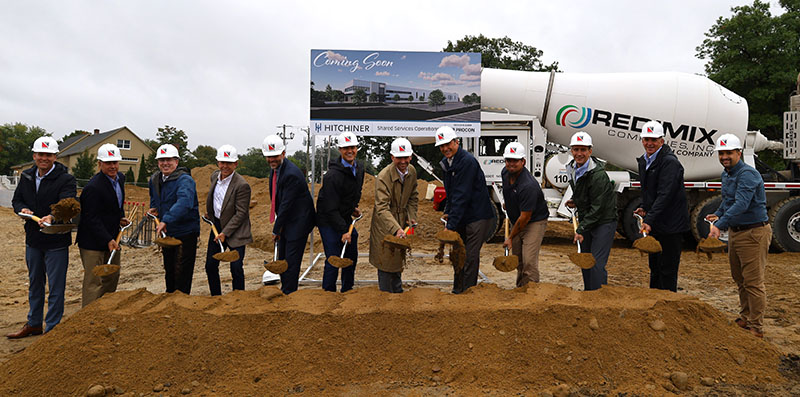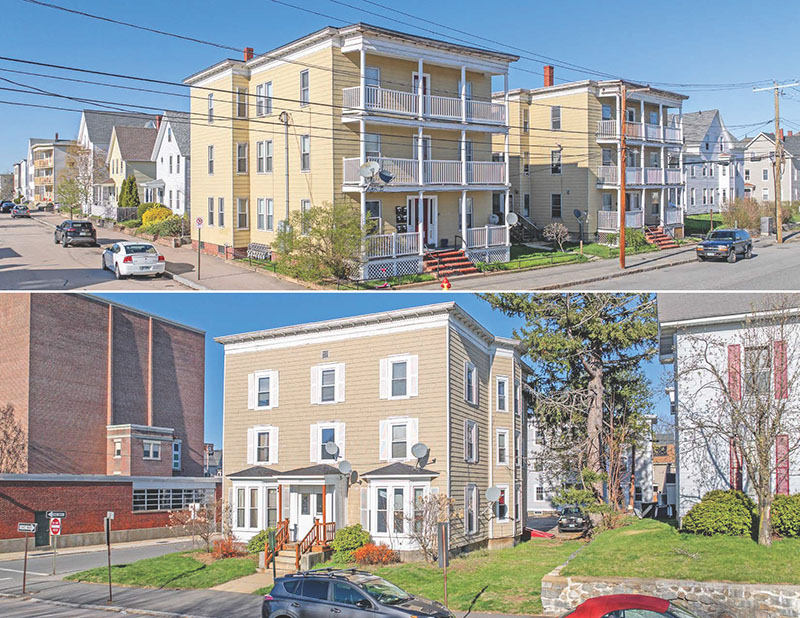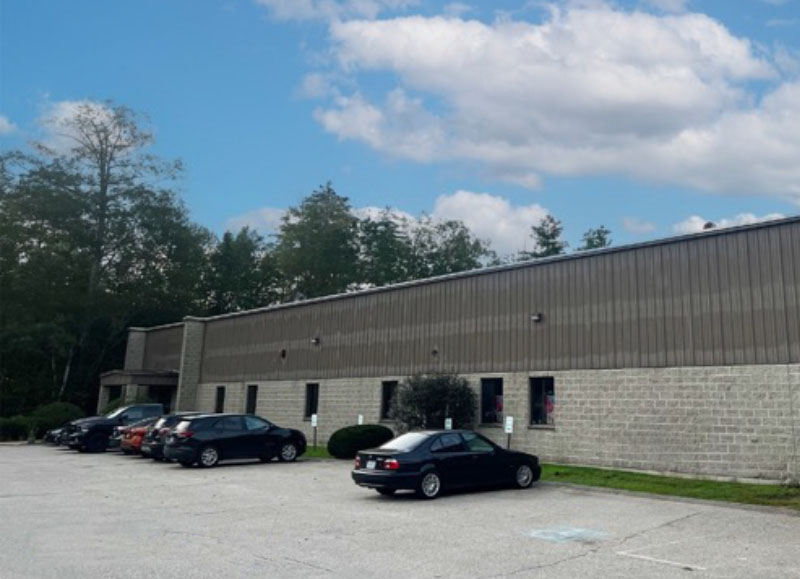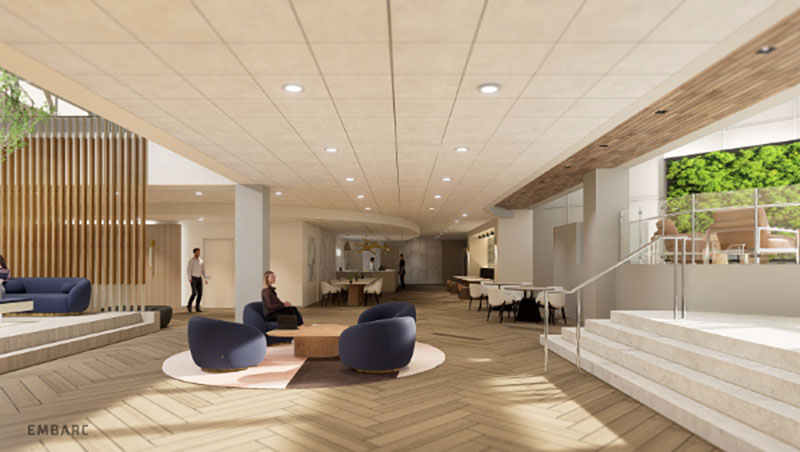News: Northern New England
Posted: March 1, 2012
New Hampshire wants occupancy not vacancy, and we have been creative in successfully filling space!
Sure, you might say, "Dah...that is a no brainer"...but unfortunately it sometimes is not as obvious.
Although New Hampshire offers state-of-the-art new facilities, most newly built buildings are for the larger State of New Hampshire institutions such as Dartmouth Medical Center and other health providers, other institutions of higher learning and multi-national private sector companies, all entities that have the resources and capital to pay for new construction. However, even in a rural state like New Hampshire, commercial real estate available sites abound with restrictive guidelines such as land use policies, growth boundaries intended to protect farm land or ridge lines and open space planning intended to guide growth towards the more urban or inner community areas of the market. The land available for new construction is becoming less available and extremely costly to develop. However, with a combination of the slower economy and an inventory of older buildings built in better times, there is a great opportunity to renovate older facilities or repurpose newer buildings that are no longer being used for their intended use, at values that are far less than new construction and with their re-use, providing an opportunity for continued economic growth for New Hampshire.
As suggested by Carolyn Bilsky in a recent article written for Commercial Investors Real Estate Magazine, "Visualizing a historic bank rehabbed as a luxury condominium building, a shuttered mill as a mixed-use development, or an abandoned big box space divided into smaller users or office space requires more than a little creativity and foresight."
But, that is exactly what is happening all over New Hampshire based on my observations and discussions with other professionals and colleagues. My personal experience is primarily focused around the Upper Valley of New Hampshire, so-called "Dartmouth Region", where repurposing buildings expands supply.
Years ago, during the early 20th Century, the American Woolen Mills Company built many brick buildings in downtown Lebanon, New Hampshire using the power of the Mascoma River. Despite fires and urban renewal back in the 1960s, several of these buildings remain representing about 250,000 s/f and providing opportunity for many smaller companies that could not afford to build.
Examples are The Rivermill Commercial Complex and The Whitman Communications Building. Both facilities have been beautifully restored at costs that were substantially less than new construction and house multiple start-up, bioscience and financial businesses that collectively provide attractive office and lab space for over 1,000 local employees. That is a tremendous impact on our economy.
This story can be told over and over in other downtowns, such as Keene, where the former Keene Middle School, known as "Washington Park" is being repurposed for professional medical offices, restaurants, workout studio and a theater.
Portsmouth has many other examples for infill repurposed buildings, not only in its downtown area, but also in their shopping mall district near Pease International Business Park, which is probably the "grand daddy" of all repurposed real estate for New Hampshire that required vision and commitment to be repositioned for the private sector, which has created thousands of high paying jobs for the seacoast area.
The Pease International Business Park is another example of a combination of repurposing a facility and the New Hampshire "Advantage", creating a spectacular success for New Hampshire and beyond.
I recently spoke to Tom Farrelly, executive director of Cushman & Wakefield of New Hampshire and was briefed on the amazing renovation of the single level, former Digital - Hewlett Packard - Cisco building in Salem.
Tom said, "Through visionary thinking by Equity Industrial Properties, my owner/client, the former 670,000 s/f Digital building was redesigned by creating a central atrium, re-facading the entire structure, creating attractive new and uniformed entrances, glass every where and new HVAC systems and full service cafeteria." Instead of vacancies, New Hampshire now has an occupied New Hampshire center for economic vitality without having to build at today's construction values, which has its place in the market, but sometimes is out of reach for startups or established businesses with low margins.
Tom announced just last week that Enterasys, formerly of Andover, Mass., will be occupying almost 200,000 s/f of 9 Northeastern Blvd. in Salem, along with Enterasys, NORA, a producer of resilient rubber flooring, occupy a majority of this repurposed building. Both of these entities are substantial employee generators for New Hampshire.
After talking with Tom, I picked up the phone and spoke to another respected colleague, Dan Scanlon of Grubb & Ellis of New England. Dan provided many examples in his region of repurposed buildings. Most notable would be: In Manchester a former meat packing plant is now River's Edge and Elliot Hospital Urgent Care Facility, the former CR Sparks in Bedford is converting to a Lexus dealership, and in Derry, the former Allen Motors was converted to a Pet Stop and the former Dave Allen Motors is converting to a Goodwill Store.
In addition and in conclusion, many other examples of repurposing buildings throughout New Hampshire would be several big box facilities, such as the former Wal-Mart store in Hooksett, which has been subdivided and repurposed as a Tractor Supply and Ocean Job Lots facility and in Concord, Linens-n-Things has been converted to another Ocean Job Lots.
In the Upper Valley the former Johnsons' Home Center, Hardware and Lumber facility has been converted to a multi-tenanted mixed use facility, anchored by Staples, Pier One and Sleepy's to name a few. The examples of repurposing New Hampshire's existing facilities to create occupancies vs. vacancies is endless and continues to prove why New Hampshire continues to hold the "Advantage" in the New England market.
Bruce Waters, CCIM is senior broker for LANG MCLAUGHRY COMMERCIAL, located in West Lebanon, N.H.
Tags:
Northern New England
MORE FROM Northern New England
PROCON and Hitchiner break ground on 57,000 s/f shared services operations facility
Milford, NH Hitchiner, in partnership with PROCON’s integrated design and construction team, has officially broken ground on a new 57,000 s/f shared services operations facility at its Elm St. campus. This building will house value-added services used across Hitchiner’s various business units,







.png)
